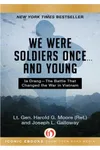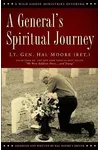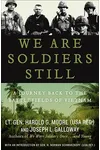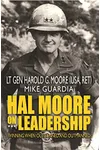Picture a fearless soldier turned storyteller who brought the raw courage of the Vietnam War to life—meet Harold G. Moore! A U.S. Army lieutenant general, Moore led 450 men against 2,000 North Vietnamese soldiers in the brutal 1965 Battle of Ia Drang, a clash that defined his legacy. His gripping memoir, We Were Soldiers Once… and Young, co-authored with journalist Joseph L. Galloway, not only immortalized this pivotal battle but also inspired a blockbuster film starring Mel Gibson. With a 32-year military career and a knack for vivid storytelling, Moore bridged the gap between the battlefield and the hearts of readers worldwide.
Born in rural Kentucky, Moore’s journey from a small-town kid to a decorated warrior and author is as inspiring as his books. His leadership philosophy—always be the first on the battlefield and the last to leave—made him a legend among soldiers and a voice for the human cost of war.
The Making of Harold G. Moore
Harold Gregory Moore Jr. was born on February 13, 1922, in Bardstown, Kentucky. A determined young man, he swapped a Naval Academy appointment for a spot at West Point, graduating in 1945. Moore’s early military career took him to Japan for occupation duty and then to the Korean War, where he earned two Bronze Star Medals for valor. His courage and innovative thinking shone during the Vietnam War, particularly at Ia Drang, where his strategic use of helicopter mobility turned the tide against overwhelming odds. This experience shaped his later writings, blending tactical insight with deep empathy for his troops.
Harold G. Moore’s Unforgettable Stories
Moore’s literary legacy rests on his ability to capture the chaos, camaraderie, and sacrifice of war. His most famous work, We Were Soldiers Once… and Young (1992), co-authored with Joseph L. Galloway, chronicles the Battle of Ia Drang with unflinching detail. The book’s vivid accounts, drawn from interviews with soldiers and North Vietnamese commanders, paint a raw picture of bravery and loss. It became a New York Times bestseller and was adapted into the 2002 film We Were Soldiers, with Mel Gibson portraying Moore’s steadfast leadership.
In 2008, Moore and Galloway revisited their story in We Are Soldiers Still: A Journey Back to the Battlefields of Vietnam. This reflective sequel explores the battle’s aftermath and Moore’s meetings with former enemies, offering a poignant look at reconciliation. Moore also penned Hal Moore on Leadership, distilling his battlefield principles into lessons for aspiring leaders. His writing style—direct, heartfelt, and grounded in real experiences—resonates with readers seeking authentic narratives about war and leadership.
Another lesser-known work, Building a Volunteer Army: The Fort Ord Contribution (1975), co-authored with Jeff M. Tuten, details Moore’s role in transitioning the U.S. Army to an all-volunteer force. While more technical, it showcases his forward-thinking approach to military reform.
Why Harold G. Moore Matters
Moore’s impact transcends his military heroics. His books humanized the Vietnam War, giving voice to soldiers often overlooked in broader narratives. We Were Soldiers Once… and Young was selected by the U.S. Marine Corps Commandant as essential reading in 1993, cementing its place in military education. His leadership principles, emphasizing trust and accountability, continue to inspire officers and civilians alike. Moore’s compassion—seen in his refusal to leave a fallen soldier behind and his lifelong connection with his troops’ families—set a standard for military leadership.
His storytelling also reshaped how the public perceives war, blending gritty realism with profound respect for both allies and adversaries. By sharing his experiences, Moore ensured the sacrifices of Ia Drang’s soldiers would never be forgotten.
- Born: February 13, 1922, Bardstown, Kentucky
- Key Works: We Were Soldiers Once… and Young, We Are Soldiers Still, Hal Moore on Leadership
- Awards: Distinguished Service Cross, Bronze Star Medals, Order of Saint Maurice
- Died: February 10, 2017, Auburn, Alabama
Snag We Were Soldiers Once… and Young and dive into Harold G. Moore’s gripping tales of courage and leadership!



